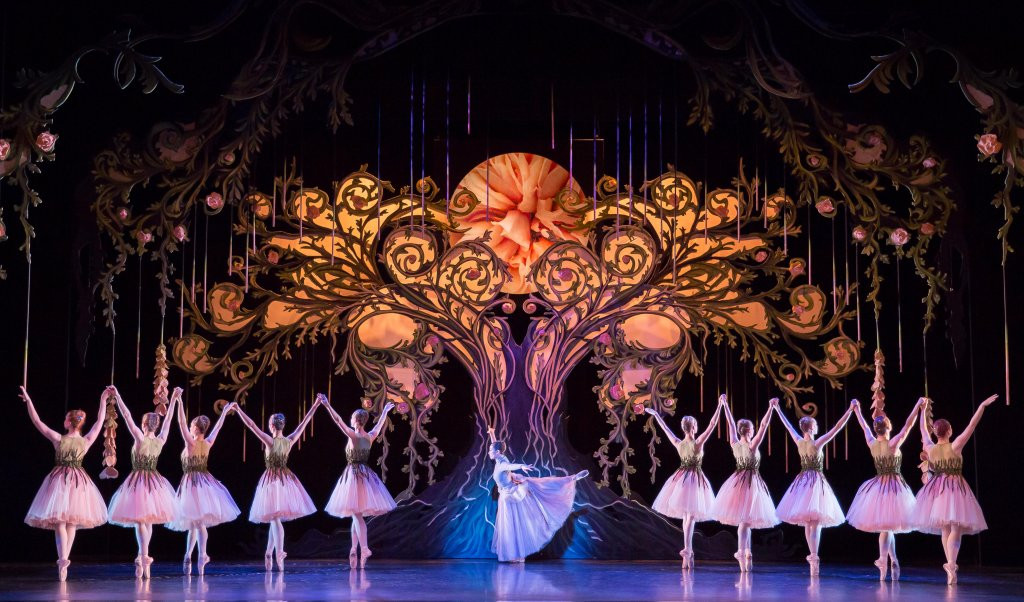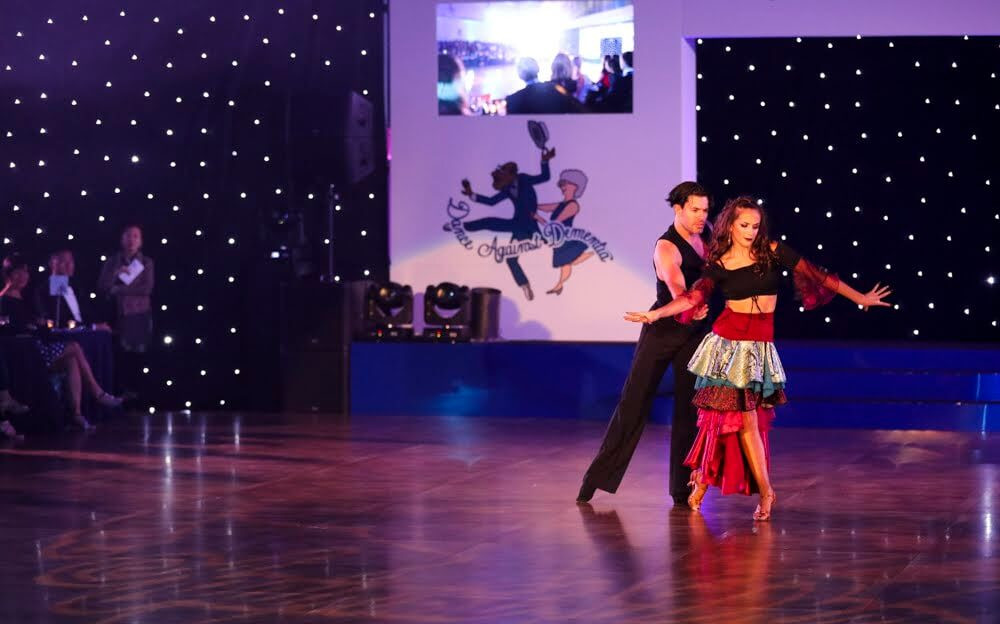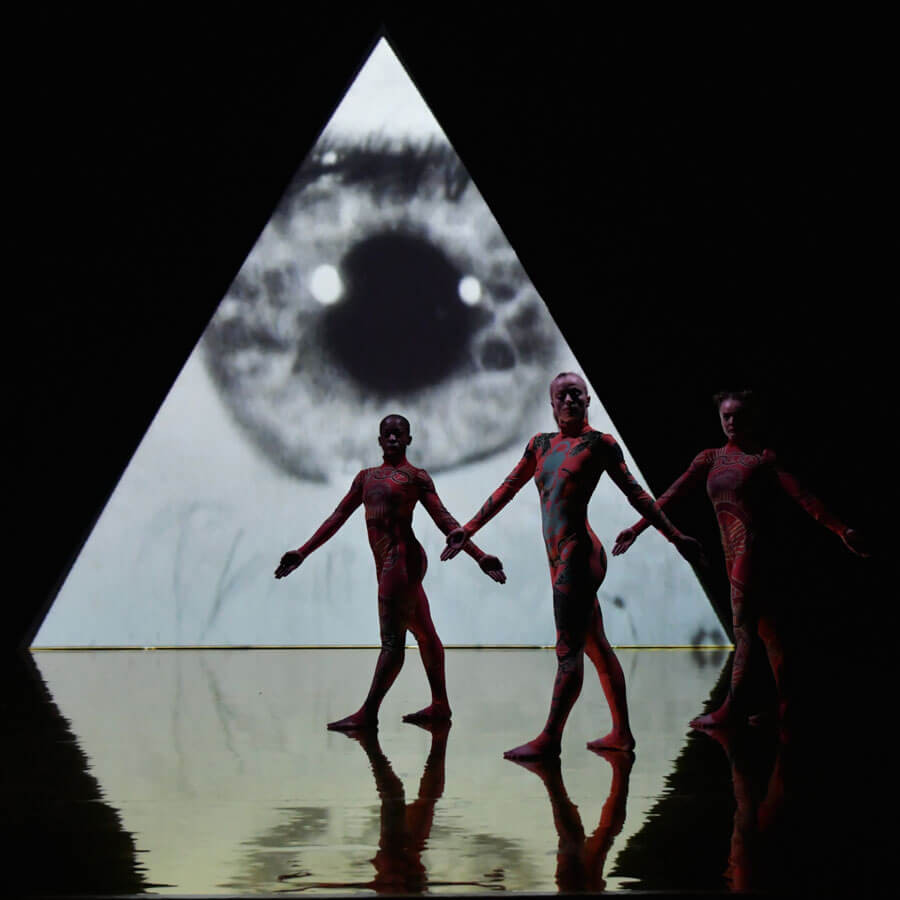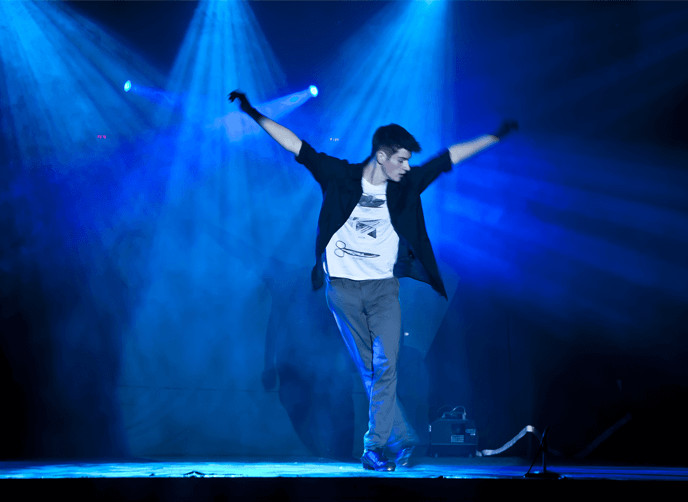Dance, an art form as old as humanity itself, transcends mere movement to become a powerful expression of culture, emotion, and storytelling. From ancient rituals to modern-day expressions, the world of dance is incredibly diverse, offering a rich tapestry of styles and genres. Understanding the Different Kinds Of Dance not only enriches our appreciation for this art form but also allows us to explore the vast spectrum of human creativity and physical expression.
Here, we delve into some of the most popular and influential dance genres, each with its unique history, techniques, and cultural significance.
A Journey Through Dance Genres
Ballet: The Epitome of Classical Grace
 ballet dancers in white tutus performing on stage
ballet dancers in white tutus performing on stage
Originating in the Italian Renaissance courts and blossoming in France and Russia, ballet stands as a cornerstone of Western theatrical dance. Characterized by its rigorous technique, graceful movements, and ethereal quality, ballet is often performed in elaborate productions set to classical music.
Key Features of Ballet:
- Technique-Driven: Ballet emphasizes precise movements, codified steps, and turnout (the outward rotation of the legs from the hips).
- Pointe Work: A hallmark of ballet, pointe work involves dancers balancing and moving on the tips of their toes using specialized pointe shoes.
- Storytelling: Many ballets tell stories through mime, gesture, and expressive movements, often based on classical literature or folklore.
- Variations and Styles: Ballet encompasses various subgenres, including classical ballet (emphasizing traditional technique), romantic ballet (focused on emotion and ethereal themes), neoclassical ballet (a bridge between classical and modern), and contemporary ballet (incorporating modern dance elements).
- Global Methods: Six main recognized methods – Cecchetti, Bournonville, Vaganova, French School, Royal Academy of Dance, and Balanchine – reflect the global reach and evolution of ballet.
Ballet dancers require specialized flooring that provides the right balance of grip and slip. Harlequin Floors offers a range of ballet dance floors and ballet barres to support dancers in their training and performance. Harlequin Cascade and sprung floors are particularly popular choices for ballet studios.
 Scottish Ballet dancers performing a graceful lift on a Harlequin Cascade floor
Scottish Ballet dancers performing a graceful lift on a Harlequin Cascade floor
Ballroom: Partnered Elegance and Rhythmic Precision
 ballroom dancers in formal attire gracefully performing a waltz
ballroom dancers in formal attire gracefully performing a waltz
Ballroom dance, originating in 16th-century France, is a sophisticated partner dance form characterized by elegance, poise, and structured movements. It has evolved into two primary categories: Standard/Smooth and Latin/Rhythm.
Standard/Smooth Ballroom Dances:
- Waltz: A graceful and flowing dance in triple time, emphasizing smooth, gliding steps and elegant rise and fall.
- Tango: A passionate and dramatic dance with sharp, staccato movements and close embraces, originating from Argentina.
- Foxtrot: A smooth and versatile dance known for its long, flowing steps and syncopated rhythms, embodying sophistication and ease.
- Quickstep: A fast-paced and energetic dance characterized by rapid steps, hops, and skips, demanding lightness and agility.
- Viennese Waltz: A fast and whirling waltz, focusing on continuous rotation and elegant sweeping movements.
Latin/Rhythm Ballroom Dances:
- Cha-cha-cha: A lively and flirtatious dance with fast footwork and Cuban motion, known for its syncopated rhythms and playful character.
- Samba: A vibrant and energetic Brazilian dance with bouncy movements, hip action, and infectious rhythms, embodying carnival spirit.
- Rumba: A slow and sensual Cuban dance characterized by romantic movements, hip swaying, and close partner connection.
- Paso Doble: A dramatic and theatrical Spanish dance inspired by bullfighting, featuring strong postures, sharp movements, and powerful music.
- Jive: A fast and energetic swing dance derived from the Jitterbug, known for its bouncy steps, kicks, and playful character.
Ballroom dance is popular both socially and competitively (“dancesport”). Harlequin Fiesta and Harlequin Liberty Ballroom floors are designed to meet the diverse needs of ballroom dancers, providing versatility and support. Harlequin Liberty Ballroom is even used on the BBC’s “Strictly Come Dancing”.
Contemporary: Expressive Freedom and Innovative Movement
 contemporary dancer in a dynamic pose on stage
contemporary dancer in a dynamic pose on stage
Emerging in the mid-20th century, contemporary dance broke away from the rigid structures of classical ballet and modern dance, embracing freedom of expression and innovation. It draws inspiration from various genres, including ballet, modern, and jazz, and is characterized by its fluidity, versatility, and emotional depth.
Key Elements of Contemporary Dance:
- Versatile Techniques: Contemporary dance incorporates a wide range of techniques, including balletic principles, modern dance techniques (like Graham and Cunningham), and improvisational approaches.
- Emphasis on Expression: Contemporary dance prioritizes emotional expression and personal interpretation, allowing dancers to communicate complex ideas and feelings through movement.
- Floor Work and Groundedness: Contemporary dance often utilizes floor work, exploring movements close to the ground and emphasizing a connection to gravity.
- Contract and Release, Fall and Recovery: Techniques like contract and release (based on breath and core engagement) and fall and recovery (exploring yielding to and rebounding from gravity) are central to contemporary movement vocabulary.
- Unpredictable Rhythms and Dynamics: Contemporary dance often features varied tempos, rhythms, and dynamic shifts, creating performances that are both captivating and unpredictable.
Contemporary dancers benefit from shock-absorbing floors that protect against impact and support dynamic movements. Harlequin Activity sprung floors, combined with vinyl dance floors, provide an ideal surface for contemporary dance.
Hip Hop: Urban Rhythms and Street Style
 hip hop dancers performing energetic moves in an urban setting
hip hop dancers performing energetic moves in an urban setting
Hip hop dance, a vibrant and diverse genre, originated in the urban streets of New York City and California in the early 1970s, emerging from hip hop music and culture. It encompasses a range of street dance styles characterized by rhythm, improvisation, and self-expression.
Major Styles of Hip Hop Dance:
- Breaking (B-girling/B-boying): Also known as breakdancing, breaking is characterized by acrobatic power moves, intricate footwork (toprock and downrock), freezes, and spins.
- Locking: Characterized by sharp pauses (“locks”), quick arm and hand movements, and a playful, funky style.
- Popping: Based on the technique of quickly contracting and relaxing muscles to create jerky movements (“pops”) in time with the music.
Derivative and Evolving Styles: Hip hop continues to evolve, with styles like Memphis Jookin’, Turfing, Jerkin’, and Krumping emerging and gaining popularity, often through music videos and social media.
Hip hop dance is often improvisational and competitive, with “dance battles” being a key element of the culture. Harlequin Freestyle is a specialized dance floor designed to meet the demands of hip hop and street dance styles, offering durability and the right level of slip resistance.
Jazz: Syncopation, Improvisation, and Energetic Flair
 jazz dancers leaping in the air with dynamic poses
jazz dancers leaping in the air with dynamic poses
Jazz dance, with roots in 17th-century African traditions brought to the Americas, evolved alongside jazz music in the early 20th century. It is characterized by its syncopated rhythms, improvisational elements, and dynamic, expressive movements.
Key Characteristics of Jazz Dance:
- Africanist Influence: Jazz dance draws heavily from African and African American vernacular dance styles, incorporating polyrhythms, isolations, and grounded movements.
- Improvisation and Individuality: Improvisation is a core element of jazz dance, allowing for personal expression and spontaneity.
- Syncopation and Rhythmic Complexity: Jazz dance is deeply intertwined with jazz music, reflecting its syncopated rhythms and complex musicality.
- Variety of Styles: Jazz dance encompasses a wide range of styles, including lyrical jazz, musical theatre jazz, commercial jazz, and contemporary jazz, each with its own nuances and aesthetics.
- Popular Jazz Dances: Swing, Lindy Hop, Shimmy, and Charleston are examples of popular jazz dances that gained prominence in the jazz era.
Harlequin Studio and Harlequin Allegro vinyl floors are excellent choices for jazz dancers, providing surfaces suitable for both practice and performance.
Tap Dance: Rhythmic Footwork and Percussive Sounds
 tap dancers performing synchronized footwork
tap dancers performing synchronized footwork
Tap dance is a percussive dance form distinguished by the rhythmic sounds created by metal taps on the dancer’s shoes striking the floor. It is a blend of African rhythms, Irish step dancing, and English clog dancing, evolving in the United States in the 19th century.
Characteristics of Tap Dance:
- Percussive Footwork: The primary focus of tap dance is the creation of rhythmic sounds using the feet, transforming the dancer into a percussive instrument.
- Metal Taps: Special shoes with metal taps on the toes and heels amplify the percussive sounds.
- Musicality and Rhythm: Tap dance is deeply connected to music, with tap dancers often interpreting musical rhythms and melodies through their footwork.
- Styles of Tap: Tap dance includes various styles, such as rhythm tap (emphasizing musicality and improvisation), Broadway tap (focused on theatrical performance and visual spectacle), and classical tap (drawing on balletic influences).
- Performance Contexts: Tap dance is often featured in musical theatre, concerts, and films, both as solo and ensemble performances.
Harlequin Fiesta is a recommended tap dance flooring option, offering a surface that enhances the clarity and resonance of tap sounds. Sprung floors like Harlequin Liberty can be used underneath to protect dancers’ joints.
Folk Dance: Cultural Heritage and Community Celebration
 group of folk dancers in traditional costumes performing an outdoor dance
group of folk dancers in traditional costumes performing an outdoor dance
Folk dance encompasses a wide range of traditional dances that reflect the cultural heritage, social customs, and historical narratives of different communities around the world. These dances are often participatory and communal, fostering a sense of belonging and shared identity.
Diversity of Folk Dance:
- Cultural Expression: Folk dances vary greatly across cultures, expressing unique traditions, stories, and values. Examples include Bharatanatyam (India), Samba (Brazil), Hula (Hawaii), Irish Ceili dancing, and many European folk dances.
- Social and Ritualistic Significance: Folk dances often play important roles in social gatherings, festivals, religious ceremonies, and storytelling, serving to transmit cultural knowledge and values across generations.
- Community Participation: Folk dances are typically accessible to people of all ages and skill levels, encouraging community involvement and participation.
- Music and Costume: Folk dances are usually accompanied by traditional music and often involve distinctive costumes that reflect cultural identity and symbolism.
- Variations within Cultures: Many cultures have diverse forms of folk dance, with specific dances for different occasions, such as harvest dances, wedding dances, or war dances.
Harlequin’s portable performance floors and dance floor hire services are well-suited for folk dance events held in various public venues.
Irish Dance: Intricate Footwork and Celtic Tradition
 irish dancers in a line performing synchronized and rapid footwork
irish dancers in a line performing synchronized and rapid footwork
Originating in Ireland, Irish dance is a vibrant traditional dance form known for its intricate footwork, upright posture, and energetic movements. Popularized globally by shows like Riverdance, Irish dance has captivated audiences with its rhythmic complexity and visual spectacle.
Key Features of Irish Dance:
- Emphasis on Footwork: Irish dance is renowned for its rapid and precise footwork, characterized by quick steps, leaps, and percussive sounds.
- Upright Posture and Arm Restraint: Dancers typically maintain a straight posture with arms held mostly stationary at their sides, focusing attention on the intricate leg and foot movements.
- Solo and Group Forms: Irish dance includes both solo forms, such as stepdance, and group forms, like Ceili and set dancing.
- Music and Competitions: Irish dance performances and competitions (“feiseanna”) are traditionally accompanied by Irish traditional music.
- Hard and Soft Shoe Styles: Irish dance includes styles performed in hard shoes (producing loud, percussive sounds) and soft shoes (ghillies), each with distinct techniques and aesthetics.
For Irish dance floors, sprung floors paired with Harlequin Standfast vinyl floors provide a high-quality surface that supports the demands of Irish dance training and performance.
Modern Dance: Rebellion, Innovation, and Personal Expression
 modern dancer in a flowing dress expressing emotion through movement
modern dancer in a flowing dress expressing emotion through movement
Modern dance emerged in the late 19th and early 20th centuries in the West as a rebellion against the rigid conventions of classical ballet. It prioritizes personal expression, emotional communication, and innovative movement vocabulary, often exploring themes of social commentary, psychology, and human experience.
Principles of Modern Dance:
- Rejection of Balletic Constraints: Modern dance challenged the strict rules of ballet, seeking greater freedom of movement and expression.
- Individual Interpretation: Modern dance emphasizes the dancer’s personal interpretation and emotional connection to the music and choreography.
- Exploration of Gravity and Weight: Modern dance often explores the use of gravity, weight, and breath in movement, contrasting with ballet’s emphasis on lightness and verticality.
- Barefoot Dancing and Non-Traditional Costumes: Early modern dancers often performed barefoot and in simple, non-traditional costumes, rejecting the elaborate aesthetics of ballet.
- Foundational Techniques: Techniques developed by pioneers like Isadora Duncan, Martha Graham, and Doris Humphrey form the basis of modern dance training, each with unique movement principles and philosophies.
Harlequin’s printed vinyl performance floors can enhance the creativity of modern dance performances, allowing for customized stage designs. Many of Harlequin’s vinyl dance floors are suitable for the versatile nature of modern dance.
Swing Dance: Joyful Partnering and Jazz Age Energy
Swing dancers in vintage clothing energetically dancing, capturing the joyful and social spirit of swing dance.
Swing dance, a lively and social dance genre, developed during the 1920s to 1940s in response to the rise of swing jazz music. Characterized by its upbeat rhythms, партнерство, and improvisational elements, swing dance embodies the energy and exuberance of the Jazz Age.
Popular Swing Dance Styles:
- Lindy Hop: Considered the quintessential swing dance, Lindy Hop is an energetic and improvisational partner dance with roots in Harlem, New York.
- Charleston: A fast-paced and syncopated dance with kicks and flicking steps, often danced solo or partnered.
- Jitterbug: A general term for various swing dances, often used interchangeably with Lindy Hop, characterized by its bouncy and energetic style.
- Balboa: A smoother and more compact swing dance style, often danced in close embrace, emphasizing subtle footwork and partner connection.
Swing dance is inherently social and participatory, often performed in social dance settings and swing dance communities worldwide. Harlequin Reversible Pro vinyl floors, with their slip-resistant surface, are suitable for swing dancers.
Conclusion: The Endless Variety of Dance
This exploration of different kinds of dance only scratches the surface of the vast and dynamic world of movement. From the classical elegance of ballet to the urban energy of hip hop, and the cultural richness of folk dance to the expressive freedom of contemporary, dance offers a spectrum of styles to explore and appreciate. Whether you are a dancer, a dance enthusiast, or simply curious about this art form, delving into the different kinds of dance opens up a world of creativity, culture, and human expression.
Harlequin Floors provides a wide range of dance floors and studio equipment to support dancers of all styles, whether for home practice or professional studios. Contact us to learn more about finding the perfect dance floor for your chosen style.

